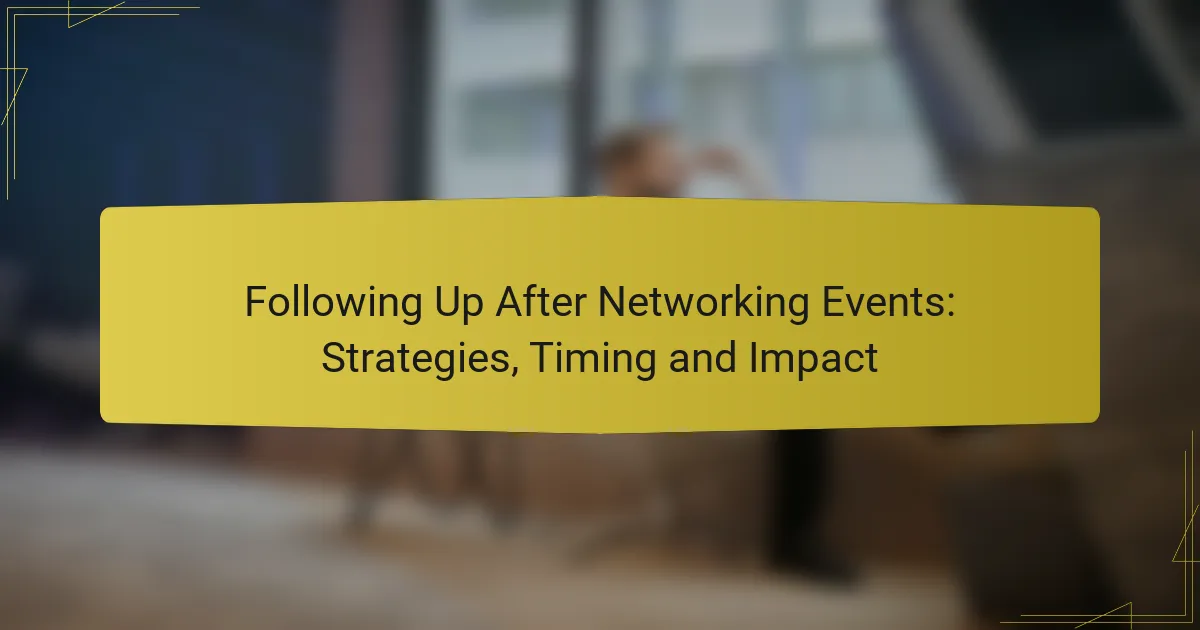Following up after networking events is crucial for reinforcing connections and opening doors to future opportunities. To maximize the impact of your outreach, aim to communicate within 24 to 48 hours, ensuring you remain top of mind. By employing effective follow-up strategies, you can strengthen relationships and enhance your professional reputation.
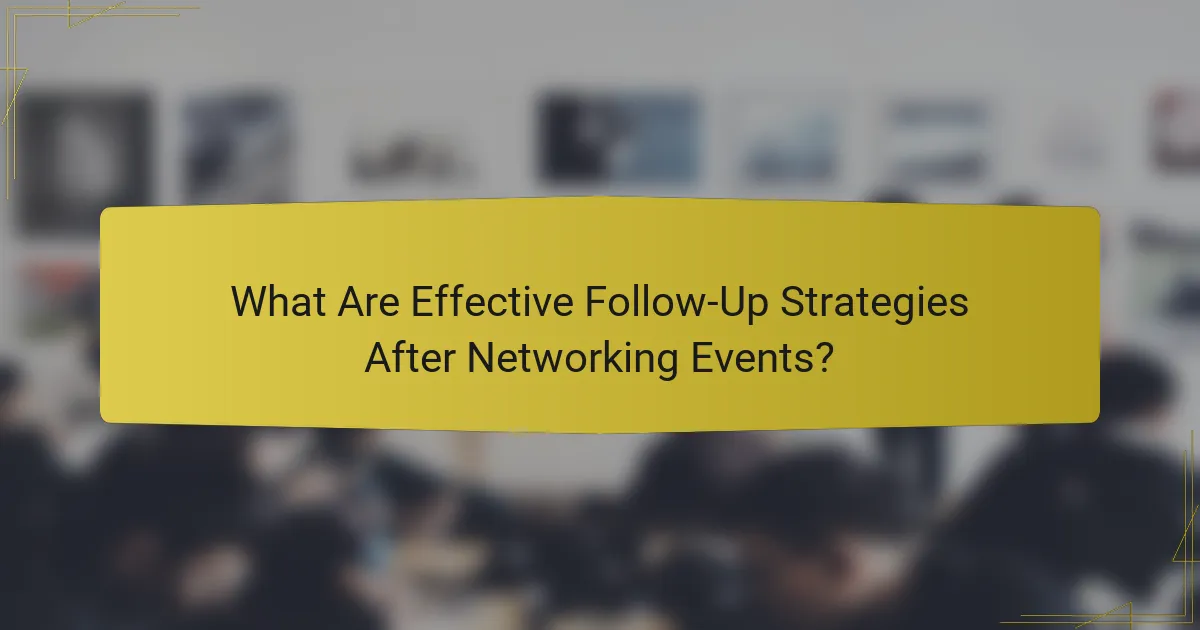
What Are Effective Follow-Up Strategies After Networking Events?
Effective follow-up strategies after networking events include timely communication and personalized outreach. These approaches help reinforce connections and can lead to future collaborations or opportunities.
Email Outreach
Email outreach is one of the most direct ways to follow up after a networking event. Aim to send your email within 24 to 48 hours to keep the interaction fresh in the recipient’s mind. A concise message that references your conversation can strengthen the connection.
When crafting your email, include a subject line that captures attention, such as “Great to Connect at [Event Name].” Personalize the content by mentioning specific topics discussed and suggesting a next step.
Social Media Engagement
Engaging on social media platforms like LinkedIn can enhance your networking efforts. After the event, connect with new contacts and send a brief message to remind them of your meeting. This keeps the relationship active and allows for ongoing dialogue.
Consider sharing relevant content or commenting on their posts to maintain visibility. Regular engagement can lead to deeper connections and potential opportunities down the line.
Personalized Thank-You Notes
Sending personalized thank-you notes can leave a lasting impression. A handwritten note or a thoughtful email expressing gratitude for the conversation shows that you value the connection. Aim to send these notes within a week of the event.
In your note, reference specific points from your discussion to make it more meaningful. This personal touch can differentiate you from others who may not follow up as thoughtfully.
Scheduling Meetings
Scheduling a follow-up meeting can solidify the relationship and open doors for collaboration. Propose a specific date and time for a coffee chat or virtual meeting, making it easy for them to say yes. Aim for a timeframe that is convenient for both parties.
When suggesting a meeting, highlight the value of the discussion, such as exploring mutual interests or potential projects. This shows your intent and encourages a positive response.
Sharing Relevant Resources
Sharing relevant resources can enhance your follow-up strategy by providing additional value. After the event, consider sending articles, reports, or tools that relate to your conversation. This demonstrates your expertise and willingness to help.
Tailor the resources to the recipient’s interests or needs, and include a brief explanation of why you think they would find it useful. This approach not only reinforces your connection but also positions you as a valuable contact.
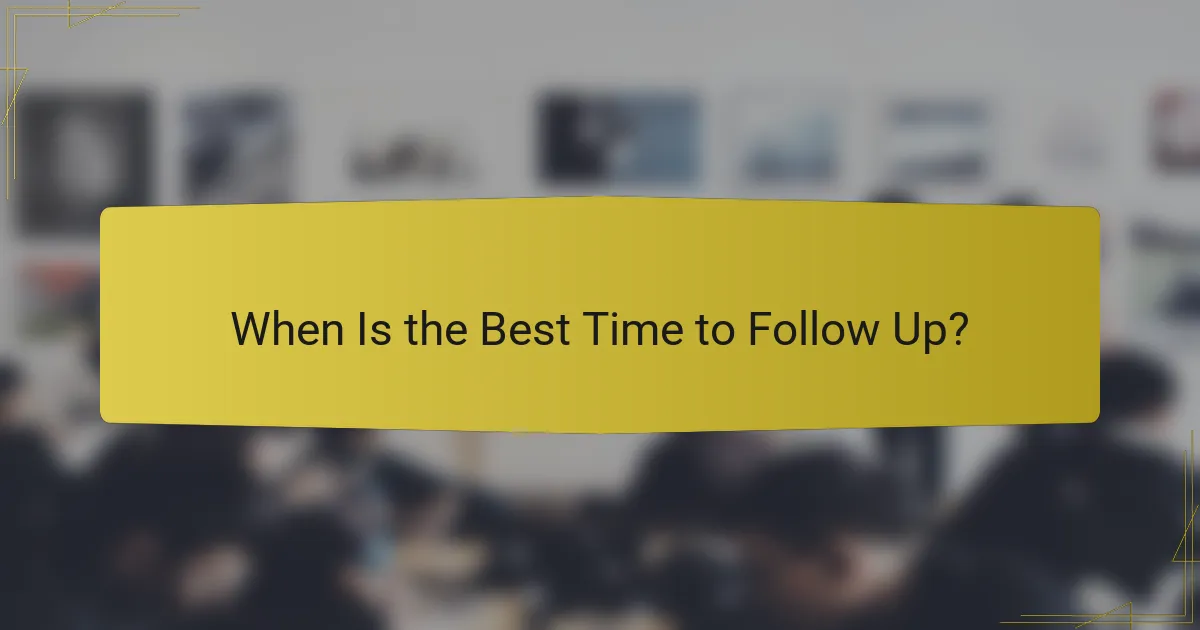
When Is the Best Time to Follow Up?
The best time to follow up after a networking event is typically within 24 to 48 hours. This timeframe helps maintain the momentum of your initial connection and keeps you fresh in the recipient’s mind.
24-48 Hours Post-Event
Following up within 24 to 48 hours is crucial for reinforcing your connection. This is when the memory of the event is still vivid for both parties. A simple email thanking them for their time and referencing a specific conversation can make a strong impression.
In your message, include any promised information or resources to demonstrate your commitment. Aim for a friendly yet professional tone to establish rapport and encourage further dialogue.
One Week Follow-Up
If you haven’t received a response after your initial follow-up, consider reaching out again after one week. This second touchpoint can serve as a gentle reminder and shows your continued interest in staying connected.
In this follow-up, you might share an article or resource relevant to your previous discussion. This adds value to your communication and positions you as a thoughtful contact.
Monthly Check-Ins
After the initial follow-ups, monthly check-ins can help maintain the relationship over time. These can be brief messages to share updates about your work or inquire about theirs, keeping the connection alive.
Use these check-ins to offer assistance or suggest meeting for coffee if geographically feasible. Regular engagement can lead to fruitful collaborations or opportunities down the line.
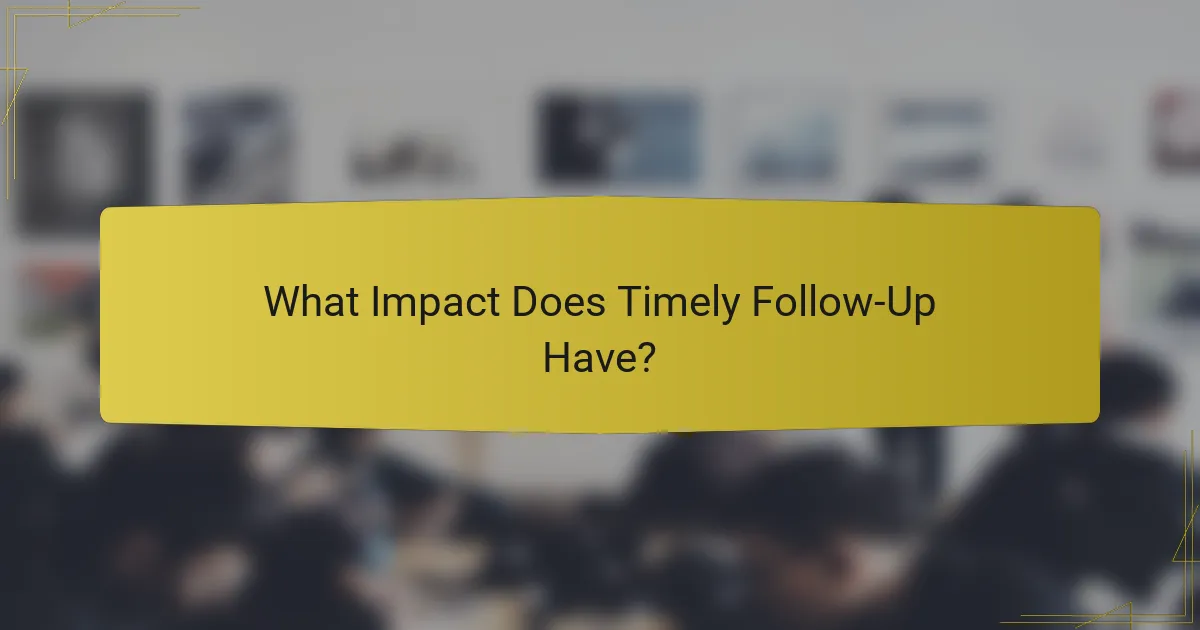
What Impact Does Timely Follow-Up Have?
Timely follow-up after networking events significantly enhances the effectiveness of the connections made. It fosters stronger relationships, increases the likelihood of referrals, and bolsters your professional reputation.
Strengthens Relationships
Following up promptly helps solidify the connections established during networking events. A simple message expressing appreciation for the conversation can reinforce the bond and keep you top of mind.
Consider personalizing your follow-up by referencing specific topics discussed. This demonstrates genuine interest and can lead to deeper, more meaningful interactions over time.
Increases Referral Opportunities
Timely follow-up can open doors to new referral opportunities. When you maintain communication with your contacts, they are more likely to think of you when opportunities arise.
To maximize referrals, share updates about your work or services in your follow-up. This keeps your network informed and positions you as a go-to resource in your field.
Enhances Professional Reputation
A prompt follow-up showcases your professionalism and commitment to building relationships. This positive impression can enhance your reputation within your industry.
Be mindful of your tone and content in follow-ups; a well-crafted message can set you apart from others who may neglect this step. Consistency in follow-ups also signals reliability, further strengthening your professional image.
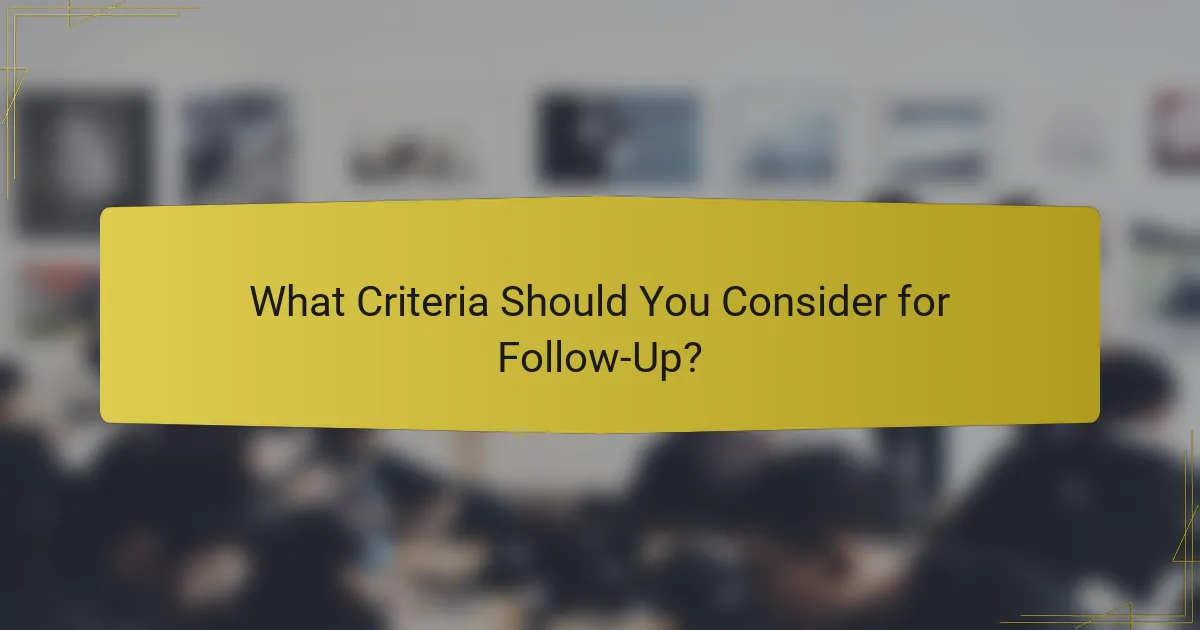
What Criteria Should You Consider for Follow-Up?
When deciding on follow-up after networking events, consider the event type, the depth of your connection, and the relevance of the industry. These factors will guide your approach and help you determine the best timing and method for reaching out.
Event Type
The type of event you attended significantly influences your follow-up strategy. For instance, a formal conference may warrant a more structured email, while a casual meetup could allow for a friendly text message. Tailor your communication style to match the event’s atmosphere.
Consider the size of the event as well. At larger conferences, a brief follow-up may suffice, while smaller gatherings might benefit from a more personal touch. Always aim to reference specific conversations to strengthen your connection.
Connection Depth
The depth of your connection with the individual is crucial in determining how to follow up. If you had an in-depth discussion, a detailed email referencing your conversation is appropriate. Conversely, if your interaction was brief, a simple message expressing gratitude for their time may be enough.
Evaluate your rapport with the person. Stronger connections may warrant a follow-up within a few days, while weaker ones might be better suited for a longer timeframe. Aim for a balance that feels natural and considerate.
Industry Relevance
Consider the relevance of your industry when planning your follow-up. In fast-paced sectors, timely communication is essential, while in more stable fields, a delayed response may still be acceptable. Stay informed about industry trends to make your follow-up more meaningful.
When reaching out, mention any relevant news or developments that could interest the recipient. This demonstrates your engagement and can lead to more fruitful discussions. Tailor your message to reflect shared interests or challenges within your industry for maximum impact.

How to Measure the Success of Your Follow-Up?
Measuring the success of your follow-up after networking events involves evaluating response rates, engagement levels, and the quality of connections made. Key indicators include how many contacts respond, the nature of those responses, and any subsequent interactions that lead to opportunities.
Response Rates
Response rates are a primary metric for assessing the effectiveness of your follow-up efforts. A typical response rate for networking follow-ups can range from 20% to 50%, depending on factors like the relevance of your message and the strength of your initial connection.
To improve response rates, personalize your messages and reference specific details from your conversation. For example, mentioning a shared interest or a topic discussed can prompt a quicker reply. Avoid generic templates, as they often lead to lower engagement.
Track your response rates over time to identify patterns. If certain types of follow-ups yield better results, adjust your approach accordingly. Consider using tools or spreadsheets to log responses and analyze trends for future networking events.
